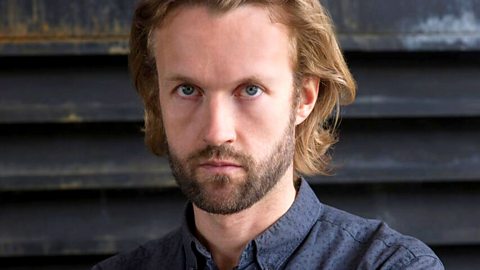Clara and Gabriel take a ride through Gabriel's mind to see how he composed his concerto.
Gabriel Prokofiev is a London-based composer, producer and DJ. He is the grandson of the 20th Century composer Sergei Prokofiev (you may have heard his ballet music 'Romeo and Juliet' as it's the theme tune of the ±«Óătv's The Apprentice television programme!). Throughout his career so far, Prokofiev has written electronica music plus a wide range of orchestral pieces, chamber music, vocal works, film scores and ballets.
Prokofiev wrote Concerto for Turntables and Orchestra in 2006 during a time when he was wrestling with his creative loyalties between classical and electronic music. According to Prokofiev, a promoter asked him to write a concerto for a DJ using turntables, with the aim of bringing classical music to new places and new people. At first he didn't like the idea – thinking it might turn out to sound terrible – but then he had a brainwave. What if the turntable player used the sounds created by the orchestra and manipulated them? It would be like a battle of sounds.
To begin with, the piece shook up what was expected of classical music, but when it was performed at the ±«Óătv Proms in August 2011 with world champion DJ Mr Switch as soloist, it was met great critical acclaim.
Listen out for: How the orchestra and soloist interact. A concerto is a composition for a solo instrument (sometimes more than one solo instrument) and orchestra. Typically, the solo instrument is a piano, or an instrument from one of the sections of the orchestra; however, in this case, it is, of course, a set of turntables!
The music created sometimes seems to be a battle of sounds. The timbre of the real orchestra fights against that of the sampled orchestra on the turntables.
Full orchestral performance: Gabriel Prokofiev's Concerto for Turntables and Orchestra (5th movement).
Gabriel Prokofiev
After studying to be a classical composer at Birmingham and York universities, Gabriel Prokofiev first made a name for himself within the worlds of Hip-Hop and Garage music founding a record label called NONCLASSICAL in 2003. He was initially reluctant to write 'classical' music for fear of being compared to his granddad, but then an opportunity came along that he couldn’t turn down and he returned to his classical roots.
In 2006 he was asked to write a concerto for DJ and orchestra and after thinking hard about it he came up with a great solution - he would create a piece with a classical concerto structure but instead of asking the orchestra to play in a Hip-Hop style he would get the DJ to imitate the sounds of the orchestra and therefore create a battle of sounds. His concerto was performed at the Proms in 2011 and has become a huge success, performed all over the world.

MP3: Listen to or download the music and samples
Download the
To save to your computer: PC - right-click and save, Mac - ctrl-click and save.
Audio samples

For beginner DJs using app/tablet/laptop download:
- Audio samples (.zip) - or
- (PDF)
- (MP3)
For experienced turntablists download:
- Scratch sentence - or
- (PDF)
- (MP3)
Lesson Plans
Download classroom lesson plans to explore Gabriel Prokofiev's music.To save to your computer: PC - right-click and save, Mac - ctrl-click and save.
To enable all images to work in the Powerpoint files please save the file to your computer. To save to your computer: PC - right-click and save, Mac - ctrl-click and save.
Primary lesson plans:
Lesson plan by Rachel Leach
Suitable for:
*Key Stage 2 in England and Wales
*Second Level, P5-P7 in Scotland
*Key Stage 1/Key Stage 2 in Northern Ireland
Secondary lesson plans:
Lesson plan 1 written by Tim Hallas.
Lesson plan 2 written by Ann Barkway.
Suitable for:
*Key Stage 3 in England, Wales and Northern Ireland
*Third and Fourth Level, S1-S3 in Scotland
Arrangements: Play the piece with simplified parts
All parts have been designed to work together to enable mixed-ability groups to perform together
Beginner/pre-Grade 1
- | |
- | | |
- | |
- | | |
- | | |
- (for use with app/tablet/laptop triggering samples in the section below)
- |
Grade 1-3
- | | |
- | | |
- | |
- | | |
- | | |
- (for use with app/tablet/laptop triggering samples in the section below)
- |
Grade 5
- | | | |
- | | | |
- | |
- | | |
- | | | |
- (for use with turntables using 'scratch sentence' - see below)
- (for use with app/tablet/laptop triggering samples - see below)
- |
Combined score
Original instrumentation
In case you're considering using original parts together with these arrangements, you may find the composer's original instrumentation helpful:
1+p+a/fl.2+c/a2+b/c.2+c/b. – 4.3.3.1. – 6P – H - strings